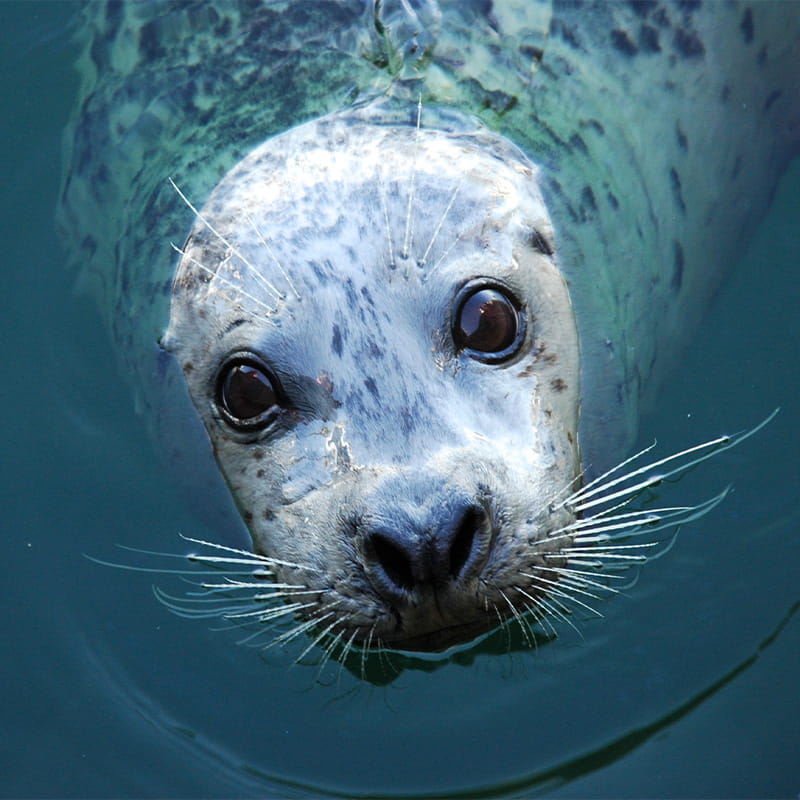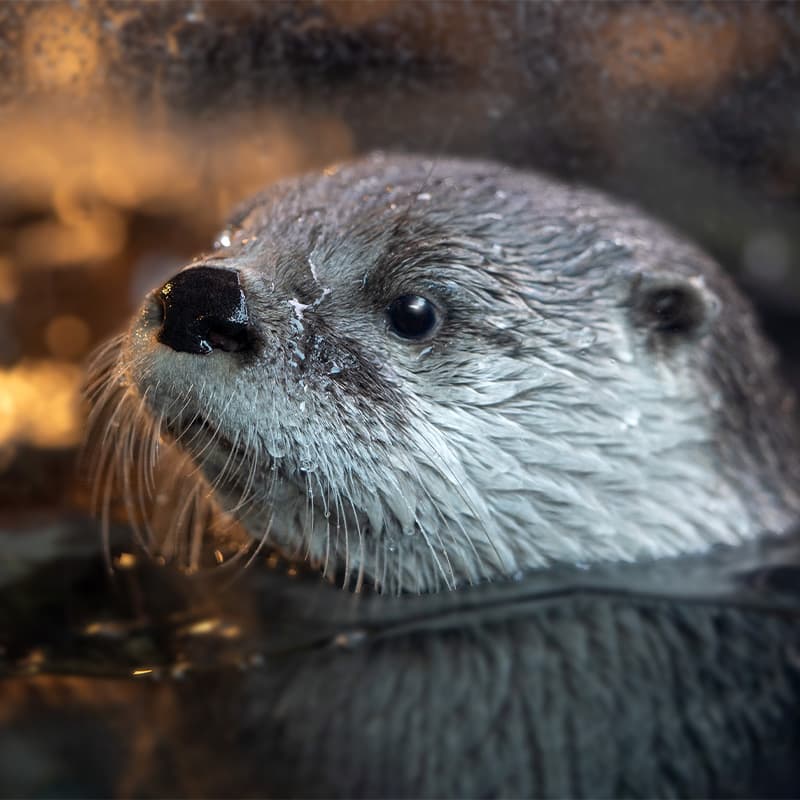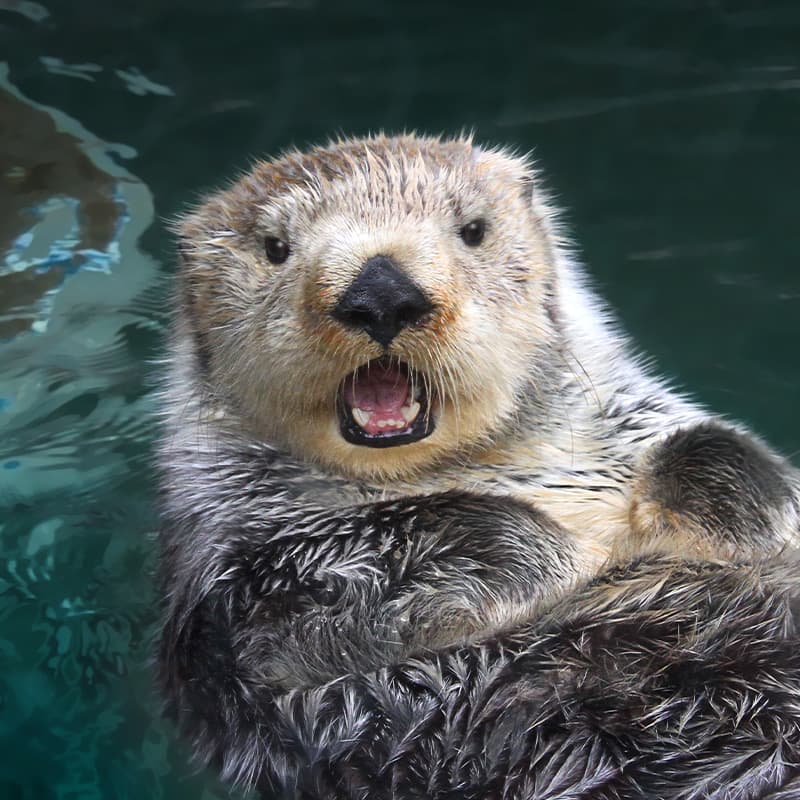- Mammals
Fur seal
Meet our northern fur seals: Chiidax and Flaherty
Did you know there are currently less than 10 northern fur seals in zoos and aquariums in the United States—and two of them live right at the Seattle Aquarium? Come say hello to Chiidax and Flaherty, ambassadors for the conservation of their species in the wild, on your next visit!
At the Aquarium
- Fur seal habitat, Pier 60
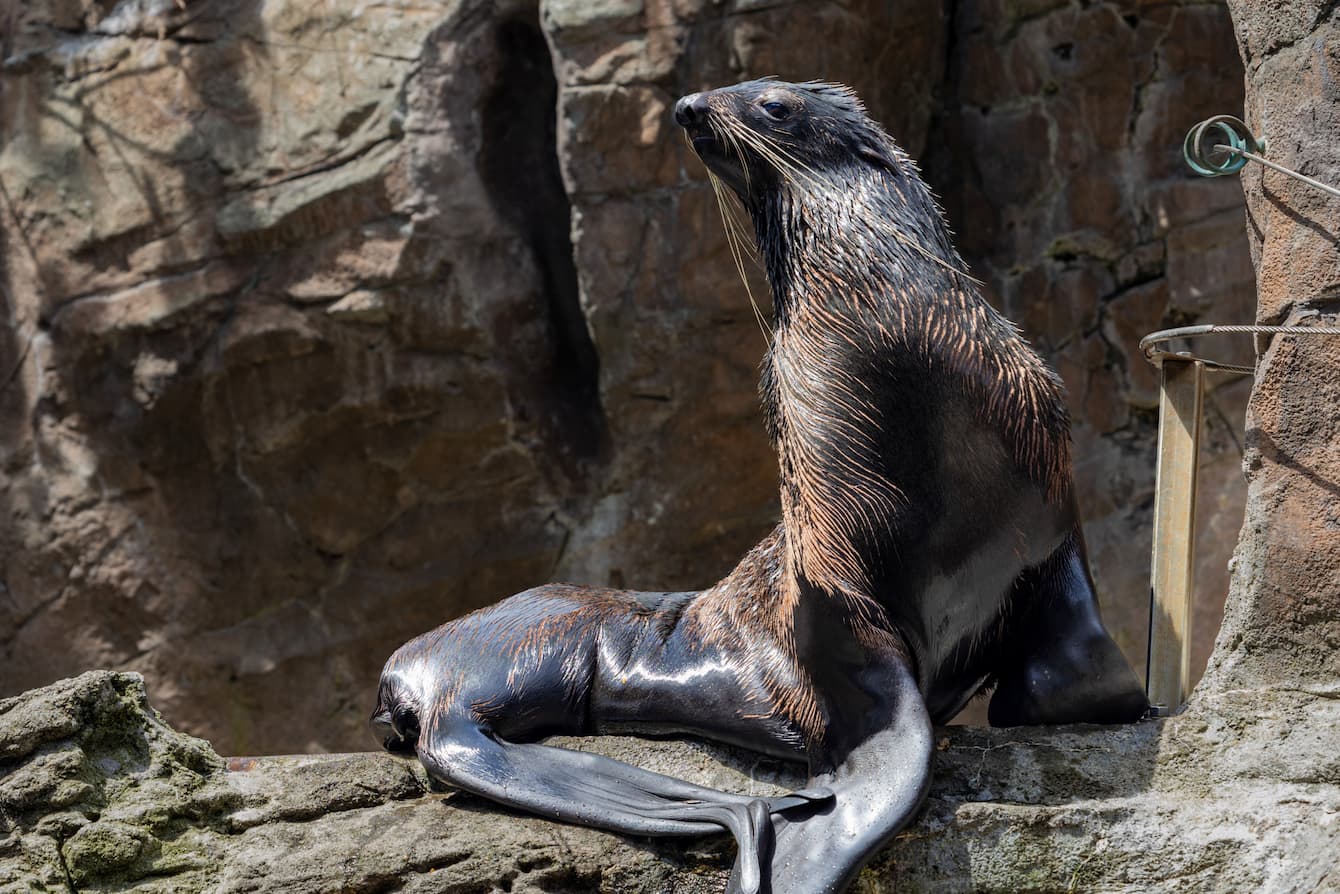
Pronounced "FLAY-herty"
Flaherty
Flaherty, or “Flare” as his caregivers call him, was born at the New England Aquarium in 2012 and spent his early years there—which means that he and Chiidax have been “roomies” before! He joined us in early 2015. Fast Flare fact: His father was Isaac, who was the last fur seal born at the Seattle Aquarium.
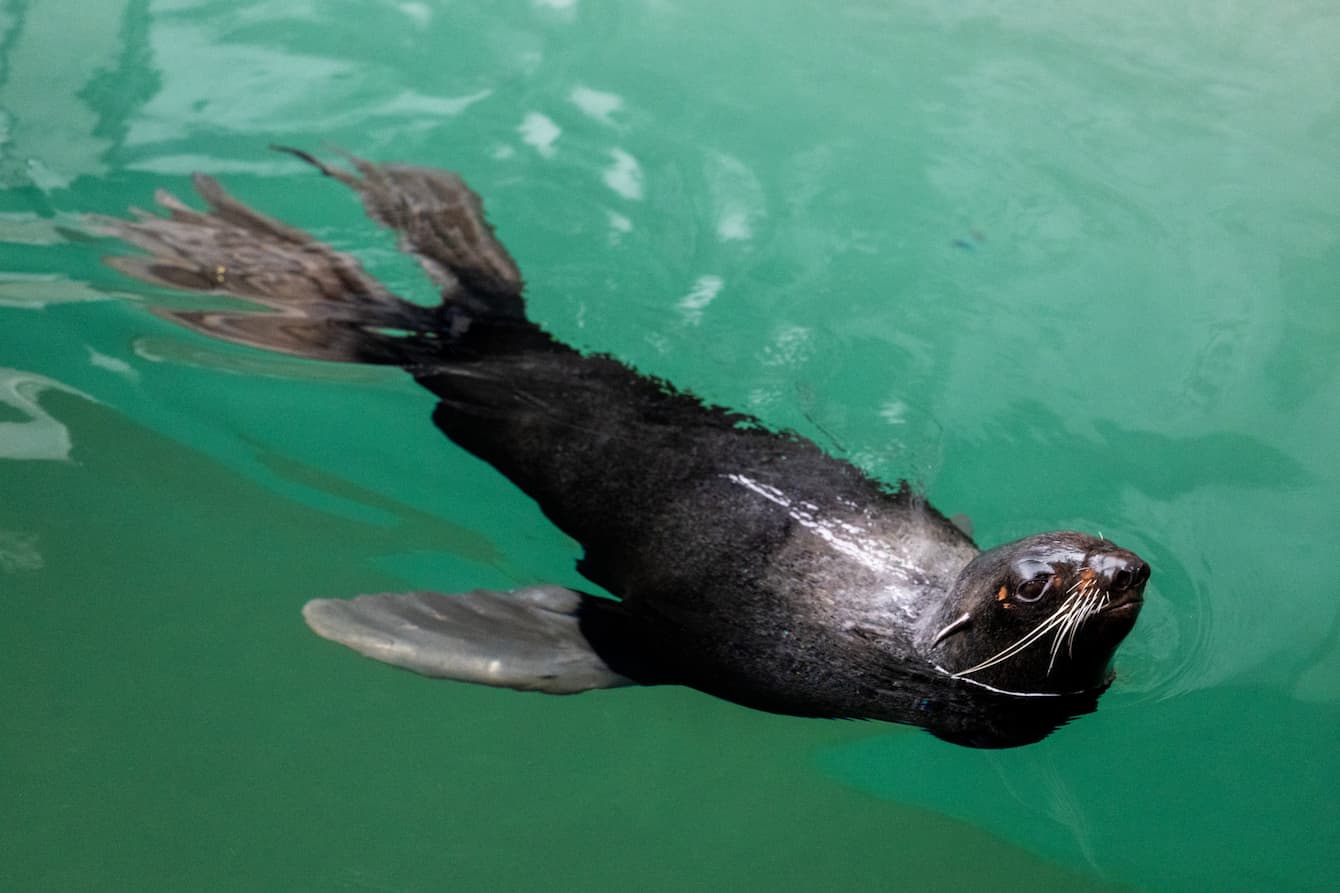
Pronounced "CHEE-dak"
Chiidax
Chiidax, who goes by Chii (pronounced "Chee") for short, joined us from the New England Aquarium in March 2022. His name means “small young animal” in Aleut. He was found in 2013 as a newborn pup on the steps of the Department of Fish and Game office in a remote area of Alaska. He was hand-raised, and after federal wildlife officials determined he couldn’t be released back into the wild, he was sent to live at the New England Aquarium.
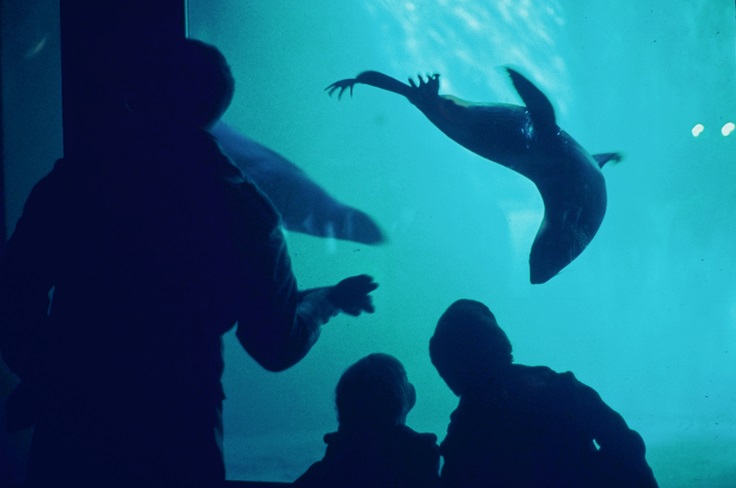
Hey, big fella
Male northern fur seals are up to six times larger than females—that’s called sexual dimorphism, and it’s significant for this species. Males average between 350 and 600 pounds; females average 95–110 lbs. Males bulk up on food all winter long in preparation for their return to the breeding grounds, where they will spend up to four months on land competing with other males for the opportunity to breed with as many females as possible. Only 10 percent of males ever get a chance to breed!
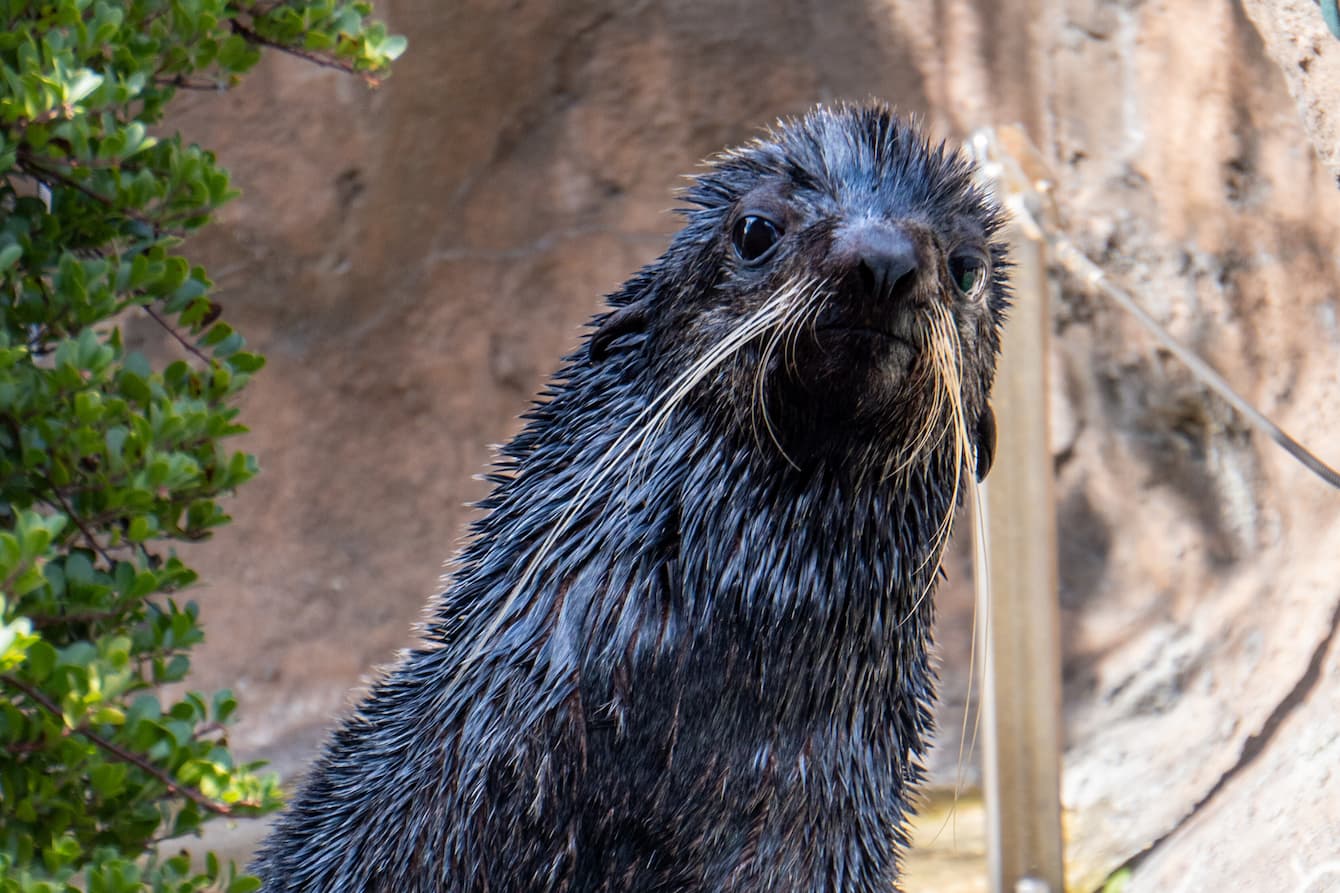
Increasing the head count
In 2009, the Seattle Aquarium collaborated with the New York Aquarium and the Mystic Aquarium in Connecticut to move the animals with the highest breeding potential to the New England Aquarium. The Seattle Aquarium sent Isaac, a male who was 10 years old at that time. Isaac was soon seen breeding and fathered a male pup—our own Flaherty!—in 2012 and a female pup in 2013.
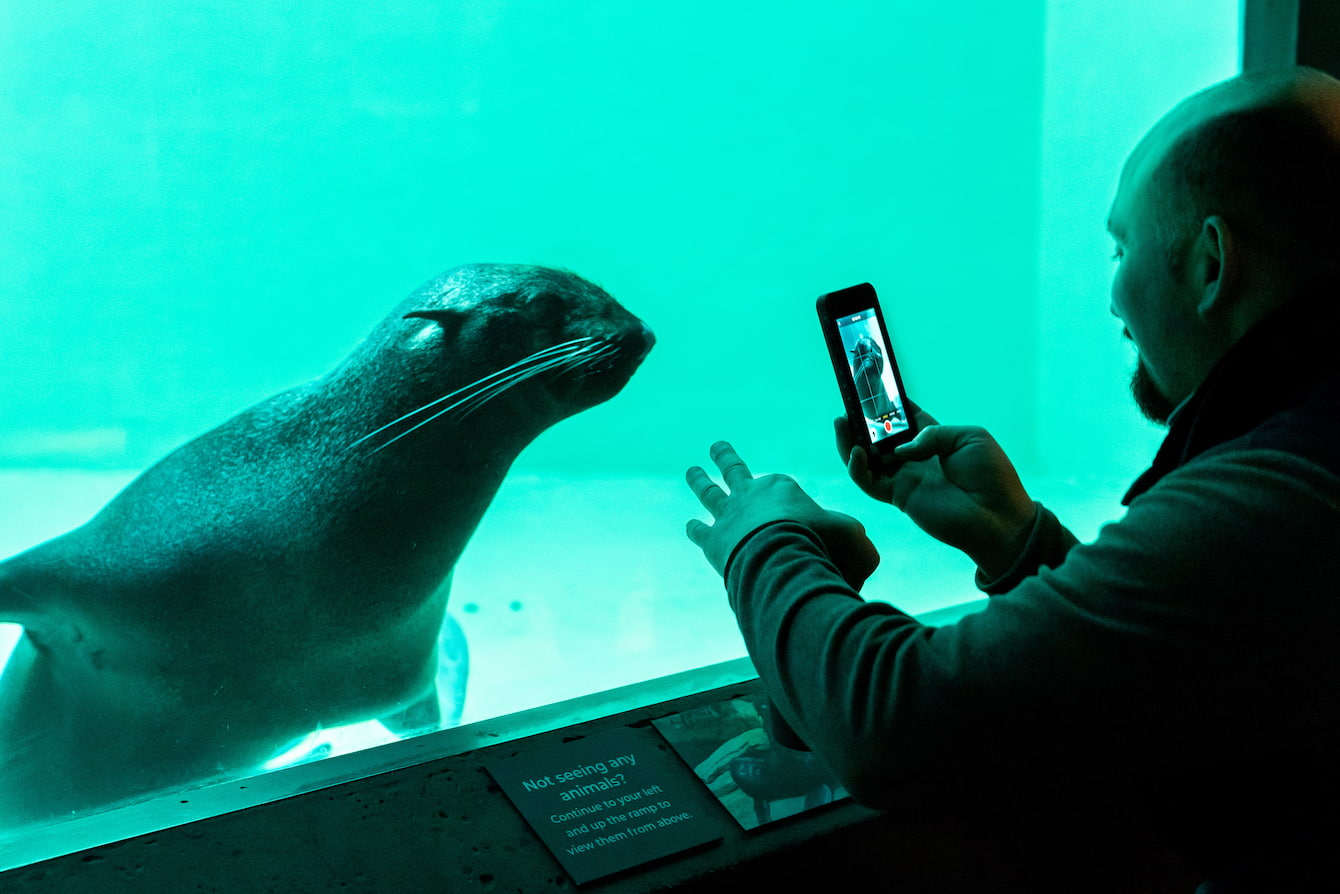
The road to a home at the Aquarium
It’s a question we hear often: how did Flaherty, Chii and the other marine mammals in our care come to be living at the Aquarium? And why can’t they live in the wild instead? Put very simply, every marine mammal—and bird!—in our care was either born in a zoo or aquarium (like Flaherty), or stranded/rescued and deemed non-releasable by the U.S. Fish and Wildlife Service or the National Marine Fisheries Service (animals with this status either have a disability or were stranded too young to be able to survive in the wild, like Chii). The Association of Zoos and Aquariums (AZA) oversees species survival plans (SSPs) which coordinate collaborative breeding programs. The Seattle Aquarium was first accredited by the AZA in 1979 and, like all members, must undergo careful review to renew that accreditation every five years.
Pela-what?
In the wild, northern fur seals are pelagic—which means that, if they’re not on land for breeding, they’re in the open ocean. They have some adaptations that help them while living primarily in the water: big eyes to help them see at night; large flippers that propel them through open water; and their thick, luxuriant fur, which made them attractive to hunters for many years. As a result, they’re listed as “depleted” under the Marine Mammal Protection Act and protected under the Fur Seal Act.
A world-first for the Seattle Aquarium
With fewer than 10 in human care, northern fur seals in zoos and aquariums are a rarity—and we at the Seattle Aquarium are proud to have a long history with this important and charismatic species. We’re one of just three facilities in the United States, and the only one on the West Coast, to have them in our care. In 1983, we became the first zoo/aquarium in the world to have a northern fur seal conceived and born in human care—one of whom was Isaac, Flaherty’s dad. When Flaherty came to live with us in 2015, it was like a fur seal full circle!
Quick facts
Male northern fur seals average between 350 and 600 pounds; females average 95 to 110 pounds.
Northern fur seals have a fur density of about 300,000 hairs per square inch!
These seals can turn their hind limbs forward and walk on all fours.
